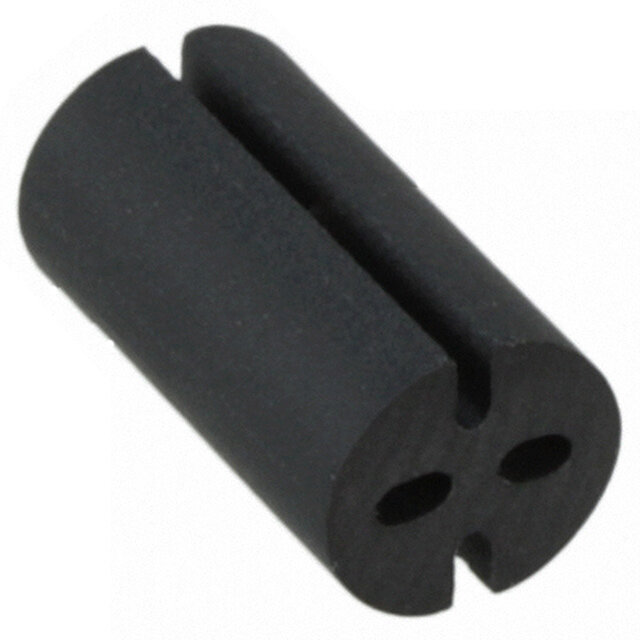ICGOO在线商城 > BU1852GXW-E2
- 型号: BU1852GXW-E2
- 制造商: ROHM Semiconductor
- 库位|库存: xxxx|xxxx
- 要求:
| 数量阶梯 | 香港交货 | 国内含税 |
| +xxxx | $xxxx | ¥xxxx |
查看当月历史价格
查看今年历史价格
BU1852GXW-E2产品简介:
ICGOO电子元器件商城为您提供BU1852GXW-E2由ROHM Semiconductor设计生产,在icgoo商城现货销售,并且可以通过原厂、代理商等渠道进行代购。 提供BU1852GXW-E2价格参考¥7.33-¥12.96以及ROHM SemiconductorBU1852GXW-E2封装/规格参数等产品信息。 你可以下载BU1852GXW-E2参考资料、Datasheet数据手册功能说明书, 资料中有BU1852GXW-E2详细功能的应用电路图电压和使用方法及教程。
| 参数 | 数值 |
| 产品目录 | 集成电路 (IC) |
| 描述 | IC GPIO KEY ENCODER 8X12 35-UBGA |
| 产品分类 | |
| 品牌 | Rohm Semiconductor |
| 数据手册 | |
| 产品图片 |
|
| 产品型号 | BU1852GXW-E2 |
| rohs | 无铅 / 符合限制有害物质指令(RoHS)规范要求 |
| 产品系列 | - |
| 供应商器件封装 | * |
| 其它名称 | BU1852GXW-E2DKR |
| 包装 | Digi-Reel® |
| 安装类型 | 表面贴装 |
| 封装/外壳 | 35-VFBGA,WLCSP |
| 工作温度 | -30°C ~ 85°C |
| 标准包装 | 1 |
| 独立电路 | 1 |
| 电压-电源 | 1.65 V ~ 3.6 V |
| 电压源 | 单电源 |
| 电流-输出高,低 | - |
| 电路 | 1 x 8:12 |
| 类型 |


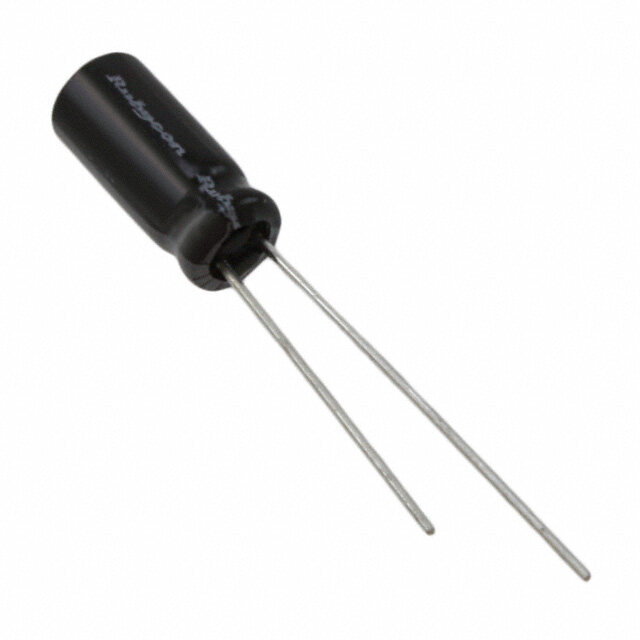
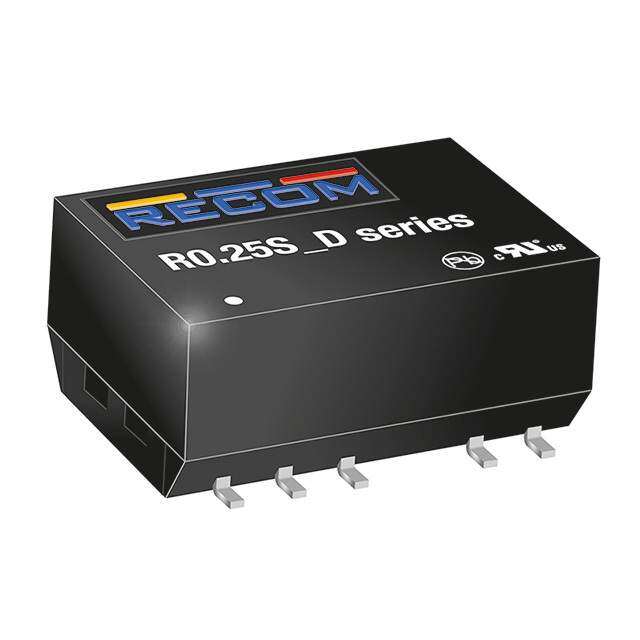
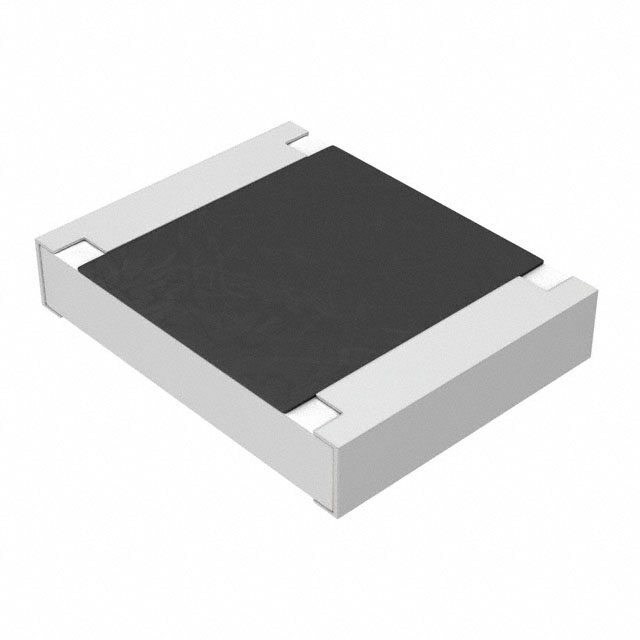
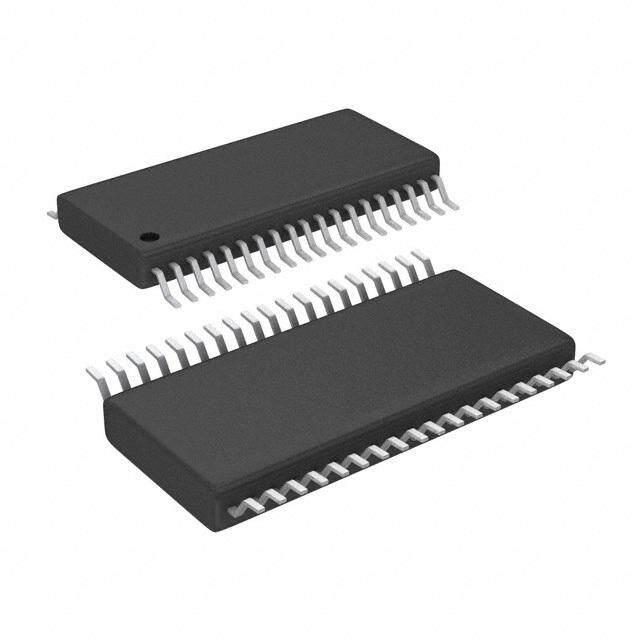

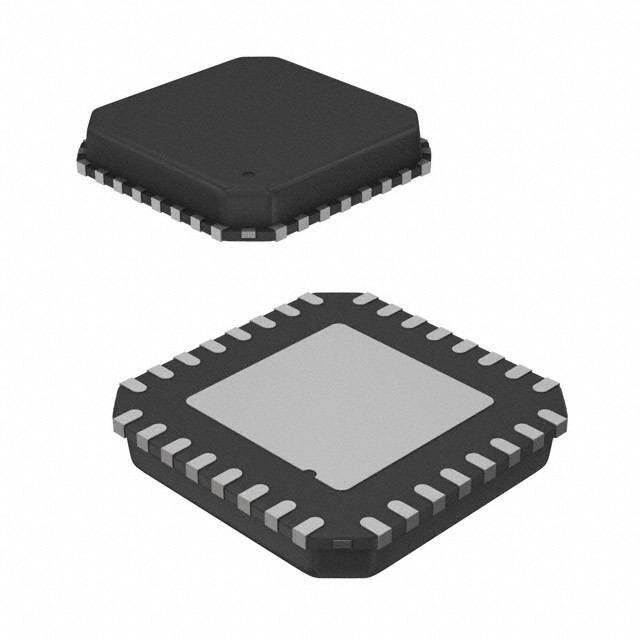

- 商务部:美国ITC正式对集成电路等产品启动337调查
- 曝三星4nm工艺存在良率问题 高通将骁龙8 Gen1或转产台积电
- 太阳诱电将投资9.5亿元在常州建新厂生产MLCC 预计2023年完工
- 英特尔发布欧洲新工厂建设计划 深化IDM 2.0 战略
- 台积电先进制程称霸业界 有大客户加持明年业绩稳了
- 达到5530亿美元!SIA预计今年全球半导体销售额将创下新高
- 英特尔拟将自动驾驶子公司Mobileye上市 估值或超500亿美元
- 三星加码芯片和SET,合并消费电子和移动部门,撤换高东真等 CEO
- 三星电子宣布重大人事变动 还合并消费电子和移动部门
- 海关总署:前11个月进口集成电路产品价值2.52万亿元 增长14.8%
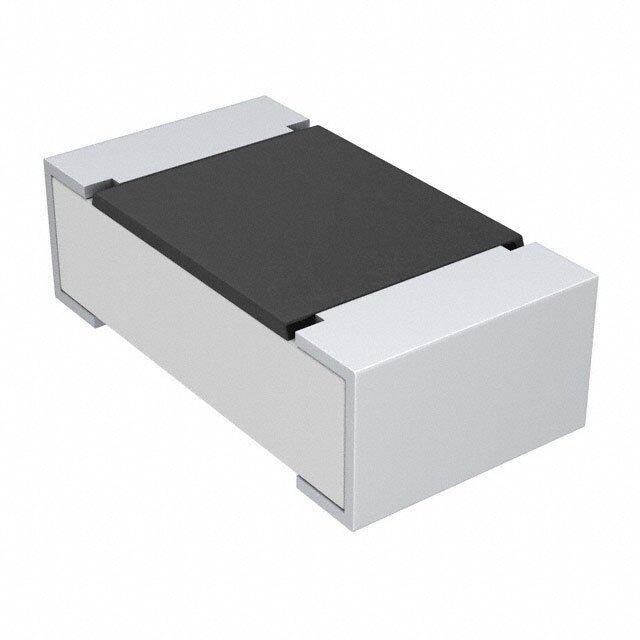
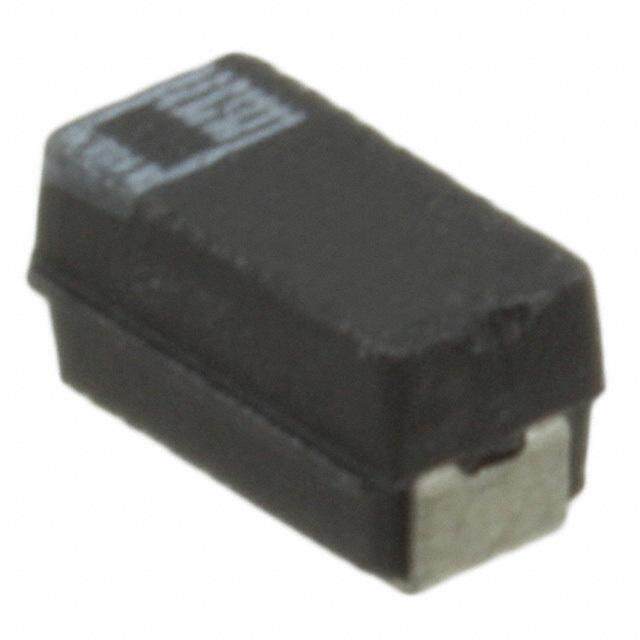

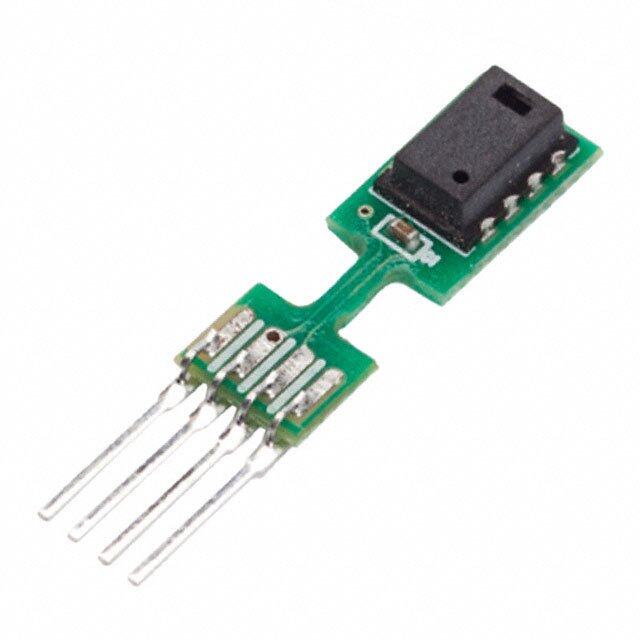
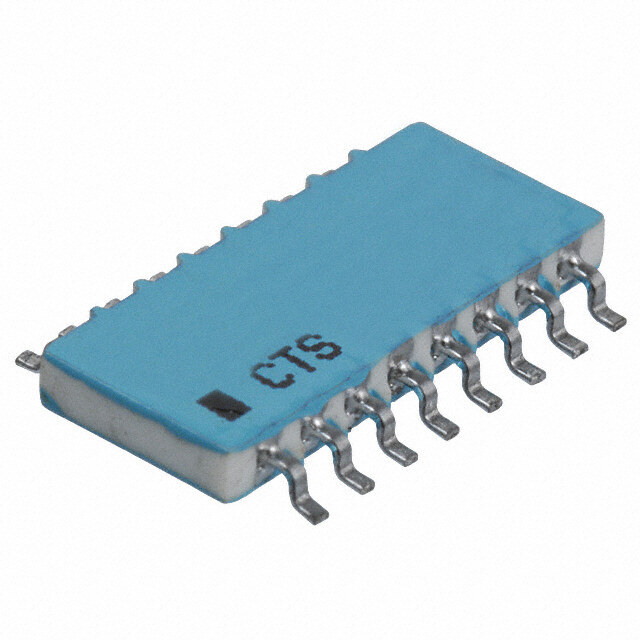
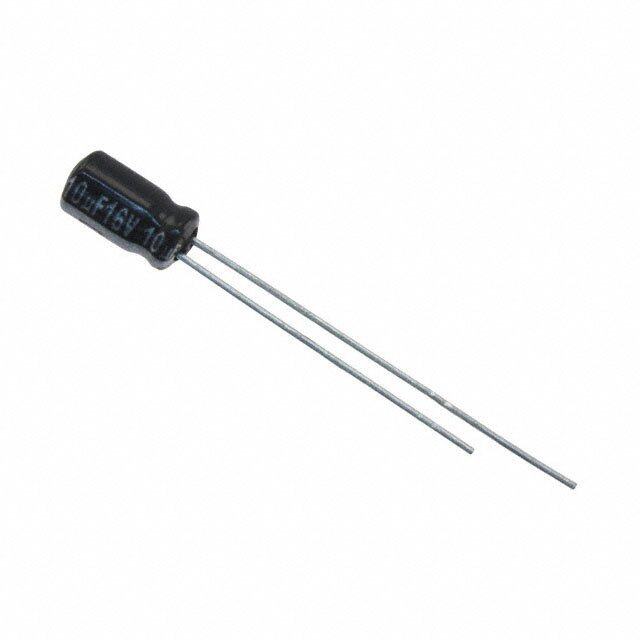
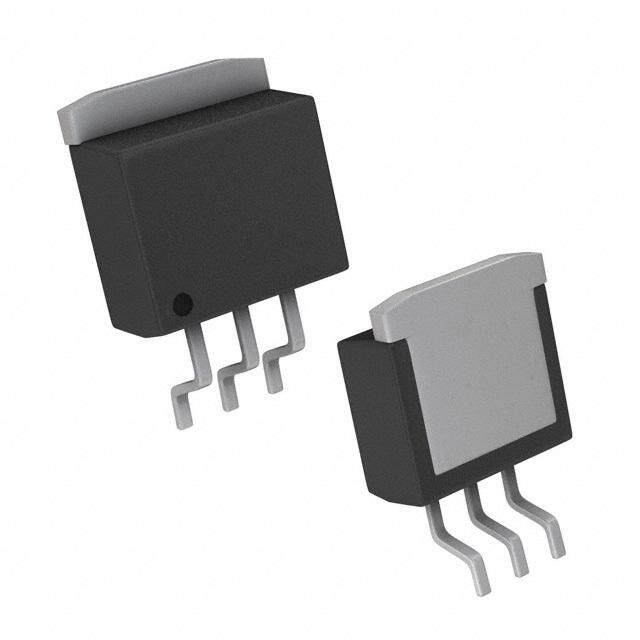
PDF Datasheet 数据手册内容提取
GPIO ICs Keyencoder IC BU1852GUW, BU1852GXW No.11098EBT04 ●Description Keyencoder IC BU1852 can monitor up to 8x12 matrix (96 keys), which means to be adaptable to Qwerty keyboard. We adopt the architecture that the information of the only key which status is changed, like push or release, is encoded into the 8 bits data. This can greatly reduce the CPU load which tends to become heavier as the number of keys increase. (Previously, all key's status is stored in the registers.) When the number of keys is small, the extra ports can be used as GPIO. Furthermore, auto sleep function contributes to low power consumption, when no keys are pressed. It is also equipped with the various functions such as ghost key rejection, N-key Rollover, Built-in power on reset and oscillator. ●Features 1) Monitor up to 96 matrix keys. 2) Under 3µA Stand-by Current 3) Built-in Power on Reset. 4) Ghost key rejection. 5) Keyscan / GPIO selectable 6) 3 volt tolerant Input ●Absolute maximum ratings (Ta=25℃) Parameter Symbol Ratings Unit Conditions VDD -0.3 ~ +2.5 V VDD≦VDDIO Supply Voltage VDDIO -0.3 ~ +4.5 V VI1 -0.3 ~ VDD +0.3※1 V XRST, XI, TW, PORENB Input voltage VI2 -0.3 ~ VDDIO +0.3※1 V ADR XINT, SCL, SDA, VIT -0.3 ~ +4.5 V COL[11:0], ROW[7:0] Storage temperature range Tstg -55 ~ +125 ℃ Package power PD 272※2 mW ※ This IC is not designed to be X-ray proof. ※1 It is prohibited to exceed the absolute maximum ratings even including +0.3 V. ※2 Package dissipation will be reduced each 2.72mW/℃ when the ambient temperature increases beyond 25℃. ●Operating conditions Ratings Parameter Symbol Unit Conditions Min. Typ. Max. Supply voltage range VDD 1.65 1.80 1.95 V (VDD) Supply voltage range VDDIO 1.65 1.80 3.60 V (VDDIO) VI1 -0.2 - VDD+0.2 V XRST, XI, TW, PORENB Input voltage range VI2 -0.2 - VDDIO+0.2 V ADR XINT, SCL, SDA, VIT -0.2 - 3.60 V COL[11:0], ROW[7:0] Operating temperature range Topr -30 25 +85 ℃ www.rohm.com 1/25 2012.08 - Rev.B © 2012 ROHM Co., Ltd. All rights reserved.
BU1852GUW, BU1852GXW Technical Note ●Electrical characteristics 1. DC characteristics (VDD=1.8V, VDDIO=1.8V, Ta=25℃) Limits Parameter Symbol Unit Conditions Min. Typ. Max. Input H Voltage1 V 0.8xVDD - 3.6 V ※1 IH1 Input H Voltage2 V 0.8xVDD - VDD+0.2 V ※2 IH2 Input H Voltage3 V 0.8xVDDIO - 3.6 V COL[11:0] IH3 Input H Voltage4 VIH4 0.8xVDDIO - VDDIO+0.2 V ADR Input L Voltage1 V -0.2 - 0.2xVDD V ※3 IL1 Input L Voltage2 V -0.2 - 0.2xVDDIO V ADR, COL[11:0] IL2 V =3.60V※4 Input H Current1 I -1.0 - 1.0 µA IN IH1 Pull-down/up OFF Input H Current2 I -1.0 - 1.0 µA V =1.80V※5 IH2 IN V =0V Input L Current I -1.0 - 1.0 µA IN IL Pull-down/up OFF Output H Voltage1 V 0.75xVDD - - V I =-2mA, ROW[7:0] OH1 OH Output H Voltage2 VOH2 0.75xVDDIO - - V IOH=-2mA, COL[11:0] Output L Voltage1 V - - 0.25xVDD V I =2mA, ※6 OL1 OL Output L Voltage2 VOL2 - - 0.25xVDDIO V IOL=2mA, COL[11:0] ※1 XINT,SCL,SDA,ROW[7:0] ※2 XRST,XI,TW,PORENB ※3 XINT,SCL,SDA,ROW[7:0],XRST,XI,TW,PORENB ※4 XINT,SCL,SDA,ROW[7:0],COL[11:0] ※5 XRST,XI,TW,PORENB,ADR ※6 XINT,SDA,ROW[7:0] 2. Circuit Current (VDD=1.8V, VDDIO=1.8V, Ta=25℃) Limits Parameter Symbol Unit Conditions Min. Typ. Max. Power Down Current I - - 1.0 µA (VDD) PD XRST=VSS Power Down Current I - - 1.0 µA (VDDIO) PDIO Standby Current1 I - - 3.0 µA (VDD) STBY1 XRST=VDD, PORENB=VSS, Standby Current1 SCL=VDD, SDA=VDD I - - 1.0 µA (VDDIO) STBYIO1 Standby Current2 I - - 1.0 µA (VDD) STBY2 XRST=VDD, PORENB=VDD, Standby Current2 SCL=VDD, SDA=VDD I - - 1.0 µA (VDDIO) STBYIO2 Operating Current Internal oscillator is used. I - 50 110 µA (VDD) OP one key is pressed. www.rohm.com 2/25 2012.08 - Rev.B © 2012 ROHM Co., Ltd. All rights reserved.
BU1852GUW, BU1852GXW Technical Note 3. I2C AC Characteristics (Repeated) Condition BIT7 BIT6 Ack STOP START tSU;STA tLOW tHIGH 1/fSCLK SCL SDA tBUF tHD;STA tSU;DAT tHD;DAT tSU;STO Fig.1 I2C AC timing VDD=1.8V, VDDIO=1.8V, Topr=25℃, TW=VSS Limits Parameter Symbol Unit Conditions Min. Typ. Max. SCL Clock Frequency f - - 400 kHz SCL Bus free time t 1.3 - - µs BUF (Repeated) START Condition t 0.6 - - µs Setup Time SU;STA (Repeated) START Condition t 0.6 - - µs Hold Time HD;STA SCL Low Time t 1.3 - - µs LOW SCL High Time t 0.6 - - µs HIGH Data Setup Time t 100 - - ns SU;DAT Data Hold Time t 0 - - ns HD;DAT STOP Condition Setup Time t 0.6 - - µs SU;STO www.rohm.com 3/25 2012.08 - Rev.B © 2012 ROHM Co., Ltd. All rights reserved.
BU1852GUW, BU1852GXW Technical Note 4. GPIO AC Characteristics A State BIT1 BIT 0 NA SCL tDV G PIO[7:0](Output) GPIO[7:0](Input) tIV tIR XINT Fig.2 GPIO AC timing VDD=1.8V, VDDIO=1.8V, Topr=25℃, TW=VSS Limits Parameter Symbol Unit Conditions Min. Typ. Max. Output Data Valid Time t - - 0.8 µs DV Interrupt Valid Time t - - 5 µs IV Interrupt Reset Time t - - 5 µs IR www.rohm.com 4/25 2012.08 - Rev.B © 2012 ROHM Co., Ltd. All rights reserved.
BU1852GUW, BU1852GXW Technical Note 5. Startup sequence tVDD tVDD VDD tVDD V DDIO tRV tRWAIT tRWAIT XRST tVDD tI2CWAIT tI2CWAIT SCL SDA Fig.3 Start Sequence timing VDD=1.8V, VDDIO=1.8V, Topr=25℃, TW=VSS Limits Parameter Symbol Unit Conditions Min. Typ. Max. VDD and VDDIO are ON VDD Stable Time t - - 5 ms VDD at the same time. Reset Wait Time t 0 - - µs XRST controlling※1 RWAIT Reset Valid Time t 10 - - µs RV I2C Wait Time t 10 - - µs I2CWAIT ※1 Even if XRST port is not used, it operates because Power On Reset is built in. In this case, connect XRST port with VDD on the set PCB. Note) At VDD=0V, when SCL port is changed from 0V to 0.5V or more, SCL port pulls the current. It is same in SDA, XINT, and ROW[7:0] ports of 3V tolerant I/O. (VDDIO=0V in case of COL[11:0] ports) VDD 0V Port 3V (~2kΩ Pull-up) 0V 0.1~1mA Port Pull Current 2~3ms Fig.4 Port operating at VDD=0V www.rohm.com 5/25 2012.08 - Rev.B © 2012 ROHM Co., Ltd. All rights reserved.
BU1852GUW, BU1852GXW Technical Note ●Package Specification U1852 Lot No. Fig.5 Package Specification (VBGA035W040) www.rohm.com 6/25 2012.08 - Rev.B © 2012 ROHM Co., Ltd. All rights reserved.
BU1852GUW, BU1852GXW Technical Note Lot No. Fig.6 Package Specification (UBGA035W030) www.rohm.com 7/25 2012.08 - Rev.B © 2012 ROHM Co., Ltd. All rights reserved.
BU1852GUW, BU1852GXW Technical Note ●Pin Assignment 1 2 3 4 5 6 A TESTM0 XI ROW0 ROW2 ROW4 TW B XRST ROW1 ROW3 ROW6 ROW5 C XINT VDD PORENB VSS ROW7 COL0 D SDA VDD VDDIO VSS COL2 COL1 E SCL COL10 COL8 COL6 COL4 COL3 F TESTM1 COL11 COL9 COL7 COL5 ADR Fig.7 Pin Diagram (Top View) ●Block diagram XI VDD VDDIO T ESTM[1:0] Oscillator ADR TW Key COL[11:0]/ Encoder GPIO[19:8] SCL Input I2C / 3wire + SDA Filter Control FIFO Key Scan / GPIO Control Interrupt Interrupt XINT ROW[7:0]/ Filter Logic GPIO[7:0] Reset XRST Gen PORENB Power on Reset VSS Fig.8 Functional Block Diagram www.rohm.com 8/25 2012.08 - Rev.B © 2012 ROHM Co., Ltd. All rights reserved.
BU1852GUW, BU1852GXW Technical Note ●Pin Functional Descriptions PIN name I/O Function Init Cell Type VDD - Power supply (Core, I/O except for COL[11:0], ADR) - - VDDIO - Power supply (I/O for COL[11:0], ADR) - - VSS - GND - - XRST I Reset(Low Active) I A XI I External clock input (32kHz) I I Select protocol TW I H: original 3 wire I B L: I2C (TW=L) Select Device Address for I2C ADR I (TW=H) H : Key scan rate 1/2 I B L : Key scan rate original H(TW=H) XINT O Key/GPIO Interrupt E Hi-z(TW=L) SCL I Clock for serial interface I D SDA I/O Serial data inout for serial interface I F ROW0 I/O ROW0 / GPIO0 ROW1 I/O ROW1 / GPIO1 ROW2 I/O ROW2 / GPIO2 ROW3 I/O ROW3 / GPIO3 I G [100kΩ Pull-up] ROW4 I/O ROW4 / GPIO4 ROW5 I/O ROW5 / GPIO5 ROW6 I/O ROW6 / GPIO6 ROW7 I/O ROW7 / GPIO7 COL0 I/O COL0 / GPIO8 COL1 I/O COL1 / GPIO9 COL2 I/O COL2 / GPIO10 COL3 I/O COL3 / GPIO11 COL4 I/O COL4 / GPIO12 L(TW=H) COL5 I/O COL5 / GPIO13 I H COL6 I/O COL6 / GPIO14 [150kΩ Pull-down] (TW=L) COL7 I/O COL7 / GPIO15 COL8 I/O COL8 / GPIO16 COL9 I/O COL9 / GPIO17 COL10 I/O COL10 / GPIO18 COL11 I/O COL11 / GPIO19 PORENB I Power on reset enable (Low Active) I B TESTM0 I Test Pins※1 I C TESTM1 I ※1 Note: All these pins must be tied down to GND in normal operation. www.rohm.com 9/25 2012.08 - Rev.B © 2012 ROHM Co., Ltd. All rights reserved.
BU1852GUW, BU1852GXW Technical Note ●I/O equivalence circuit A B C D E F G H I Fig.9 Equivalent I/O circuit diagram www.rohm.com 10/25 2012.08 - Rev.B © 2012 ROHM Co., Ltd. All rights reserved.
BU1852GUW, BU1852GXW Technical Note ●Functional Description 1. Power mode The device enters the state of Power Down when XRST=”0”. When XRST becomes High after powered, the device enters the standby state. Power On Reset A Power On Reset logic is implemented in this device. Therefore, it will operate correctly even if the XRST port is not used. In this case, the XRST port must be connected to “1” (VDD), and the PORENB port must be connected to “0” (VSS). If you don’t want to use Power On reset, you must connect PORENB port to “1” (VDD). Power Down State The device enters Power Down state by XRST=”0”. An internal circuit is initialized, and key encoding and 3wire/I2C interface are invalid. Power On Reset becomes inactive during this state. Stand-by State The device enters the stand-by state by setting XRST to "1". In this state, the device is waiting for keys pressed or I2C communication (TW=”0”). When a key is pressed or I2C start condition, the state will change to operation. Power On Reset is active in this state if PORENB = “0”. Operating State The device enters the operating state by pressing keys. The device will scan the key matrix and encode the key code, and then the 3wire/I2C interface tries to start communication by driving XINT “0”. See next section for the details. After communicating with host device, when no keys are pressed, the device returns to the stand-by state. Power On Reset is active in this state if PORENB=”0”. 2. Protocol of serial interface I2C When set to TW=”0”, SCL and SDA are used for I2C communication. Any register shown in section 4 can be accessed through I2C. Initially, all GPIO ports are set to GPI and pull-up/down ON. When the application requires GPO or key scan, proper register setting should be done through I2C. 3 wire (Original) When set to TW=”1”, SCL and SDA are used for original 3wire communication, which is not the standard interface. Any register shown in section 4 cannot be accessed through 3wire. With TW=”1”, only keyscan and key encoding are supposed to be performed. GPIO function is inactive. When the application needs kind of complex system (for instance, GPO+keyscan or GPIO+keyscan…), I2C mode is recommended. See appendix for the details. www.rohm.com 11/25 2012.08 - Rev.B © 2012 ROHM Co., Ltd. All rights reserved.
BU1852GUW, BU1852GXW Technical Note 3. I2C Bus Interface (TW=”0”) Each function of GPIO is controlled by internal registers. The I2C Slave interface is used to write or read those internal registers. The device supports 400kHz Fast-mode data transfer rate. Slave address Two device addresses (Slave address) can be selected by ADR port. A7 A6 A5 A4 A3 A2 A1 R/W ADR=0 0 0 0 1 0 1 0 1/0 ADR=1 0 0 0 1 1 0 1 Data transfer One bit of data is transferred during SCL = “1”. During the bit transfer SCL = “1” cycle, the signal SDA should keep the value. If SDA changes during SCL = “1”, START condition or STOP condition occur and it is interpreted as a control signal. SDA SCL Data is valid SDA is when SDA is stable variable Fig.10 Data transfer START・STOP・Repeated START conditions When SDA and SCL are “1”, the data isn’t transferred on the I2C bus. If SCL remains “1” and SDA transfers from “1” to “0”, it means “Start condition” is occurred and access is started. If SCL remains “1” and SDA transfers from “0” to “1”, it means “Stop condition” is occurred and access is stopped. It becomes repeated START condition (Sr) the START condition enters again although the STOP condition is not done. SDA SCL S Sr P START Condition Repeated START Condition STOP Condition Fig.11 START・STOP・Repeated START conditions www.rohm.com 12/25 2012.08 - Rev.B © 2012 ROHM Co., Ltd. All rights reserved.
BU1852GUW, BU1852GXW Technical Note Acknowledge After start condition is occurred, 8 bits data will be transferred. SDA is latched by the rising edge of SCL. After 8 bits data transfer is finished by the “Master”, “Master” opens SDA to “1”. And then, “Slave” de-asserts SDA to “0” as “Acknowledge”. SDA output from “Master” Not acknowledge SDA output from “Slave” Acknowledge SCL 1 2 8 9 S Clock pulse START condition For Acknowledgs Fig.12 Acknowledge Writing protocol Register address is transferred after one byte of slave address with R/W bit. The 3rd byte data is written to internal register which defined by the 2nd byte. However, when the register address increased to the final address (18h), it will be reset to (00h) after the byte transfer. S X X X X X X X 0 A X X X A4A3A2A1A0 A D7D6D5D4D3D2D1D0 A D7D6D5D4D3D2D1D0 A P Slave address Register address data data R/W=0(write) Register address Register address increment increment Transmit from master A=acknowledge A=not acknowledge S=Start condition Transmit from slave P=Stop condition Fig.13 Writing protocol www.rohm.com 13/25 2012.08 - Rev.B © 2012 ROHM Co., Ltd. All rights reserved.
BU1852GUW, BU1852GXW Technical Note Reading protocol After Writing the slave address and Read command bit, the next byte is supposed to be read data. The reading register address is the next of the previous accessed address. Reading address is incremented one by one. When the incremented address reaches the last address, the following read address will be reset to (00h). S X X X X X X X 1 A D7D6D5D4D3D2D1D0 A D7D6D5D4D3D2D1D0 A P Salve address data data R/W=1(Read) Register Address Register address increment increment A=acknowledge Transmit from master A=not acknowledge S=Start condition P=Stop condition Transmit from slave Fig.14 Readout protocol Complex reading protocol There is the complex reading protocol to read the specific address of registers that master wants to read. After the specifying the internal register address as writing command, master occurs repeated START condition with read command. Then, the reading access of the specified registers is supposed to start. The register address increment is the same as normal reading protocol. If the address is increased to the last, it will be reset to (00h). S X X X X X X X 0 A X X X A4A3A2A1A0 A Sr X X X X X X X 1 A Slave address Register address Slave address R/W=0(write) R/W=1(read) D7D6D5D4D3D2D1D0 A D7D6D5D4D3D2D1D0 A P data data Register address Register address increment A=acknowledge increment Transmit from master A=not aclnowledge S=Start condition P=Stop condition Transmit from slave Sr=Repeated Start condition Fig.15 Complex reading protocol Illegal access of I2C When illegal access happens, the data is annulled. The illegal accesses are as follows. ・The START condition or the STOP condition is continuously generated. ・When the Slave address and the R/W bit are written, repeated START condition or the STOP condition are generated. ・Repeated START condition or the STOP condition is generated while writing data. www.rohm.com 14/25 2012.08 - Rev.B © 2012 ROHM Co., Ltd. All rights reserved.
BU1852GUW, BU1852GXW Technical Note 4. Register configuration Table1 shows the register map and Table2 indicates each function in the corresponding bit. Only when TW is “0”, these registers can be accessed with I2C. By making XRST “0”, the setting register value will be initialized shown in following register map. Table1 Register map Address Init Type D7 D6 D5 D4 D3 D2 D1 D0 00h 00h R/W RESET reserved reserved reserved reserved reserved reserved reserved 01h 00h R/W reserved reserved reserved reserved reserved reserved reserved CLKSEL 02h 11h R/W reserved KS_RATE *1 03h 00h R/W reserved reserved reserved reserved KS_C11 KS_C10 KS_C9 KS_C8 04h 00h R/W KS_C7 KS_C6 KS_C5 KS_C4 KS_C3 KS_C2 KS_C1 KS_C0 05h 00h R/W KS_R7 KS_R6 KS_R5 KS_R4 KS_R3 KS_R2 KS_R1 KS_R0 06h 00h R/W reserved reserved reserved reserved IOD19 IOD18 IOD17 IOD16 07h 00h R/W IOD15 IOD14 IOD13 IOD12 IOD11 IOD10 IOD9 IOD8 08h 00h R/W IOD7 IOD6 IOD5 IOD4 IOD3 IOD2 IOD1 IOD0 09h 00h R/W reserved reserved reserved reserved INTEN19 INTEN18 INTEN17 INTEN16 0Ah 00h R/W INTEN15 INTEN14 INTEN13 INTEN12 INTEN11 INTEN10 INTEN9 INTEN8 0Bh 00h R/W INTEN7 INTEN6 INTEN5 INTEN4 INTEN3 INTEN2 INTEN1 INTEN0 0Ch 00h R/W reserved reserved reserved reserved GPO19 GPO18 GPO17 GPO16 0Dh 00h R/W GPO15 GPO14 GPO13 GPO12 GPO11 GPO10 GPO9 GPO8 0Eh 00h R/W GPO7 GPO6 GPO5 GPO4 GPO3 GPO2 GPO1 GPO0 0Fh 00h R/W reserved reserved reserved reserved XPD19 XPD18 XPD17 XPD16 10h 00h R/W XPD15 XPD14 XPD13 XPD12 XPD11 XPD10 XPD9 XPD8 11h 00h R/W XPU7 XPU6 XPU5 XPU4 XPU3 XPU2 XPU1 XPU0 12h 00h R/W reserved reserved reserved reserved reserved reserved reserved INTFLT 13h 00h - reserved reserved reserved reserved reserved reserved reserved reserved 14h 00h R keycode 15h 00h R reserved reserved reserved Reserved reserved reserved fifo_ovf fifo_ind 16h 00h R reserved reserved reserved Reserved GPI19 GPI18 GPI17 GPI16 17h 00h R GPI15 GPI14 GPI13 GPI12 GPI11 GPI10 GPI9 GPI8 18h FFh R GPI7 GPI6 GPI5 GPI4 GPI3 GPI2 GPI1 GPI0 *1 Do not write more than 0x7F in KS_RATE ※ Do not write “1” in the reserved resisters. The write commands to 13h-18h addresses’ registers are ignored. www.rohm.com 15/25 2012.08 - Rev.B © 2012 ROHM Co., Ltd. All rights reserved.
BU1852GUW, BU1852GXW Technical Note Table2 Register function Symbol Address Description Software reset. All registers are initialized by writing "1". RESET 00h This register value is returned to "0" automatically. Exceptionally, GPIn register is not initialized. “1” : External clock from XI is used. CLKSEL 01h “0” : Internal CR oscillator is used. KS_RATE 02h Key scan rate control When set to “1”, port is used as COLx for key scan. KS_Cx 03h-04h When set to “0”, it is used as GPIO port. When set to “1”, port is used as ROWy for key scan. KS_Ry 05h When set to “0”, it is used as GPIO port. GPIOn’s IO direction. IODn 06h-08h When set to “1”, GPIOn direction is output. When set to “0”, GPIOn direction is input. INTENn 09h-0Bh Interrupt of GPIOn port is enabled by "1". It is masked by "0". GPOn 0Ch-0Eh Output value of GPIOn port. XPDn 0Fh-10h Pull-down of GPIOn port is on by "0" and off by "1". GPIOn should be input. XPUn 11h Pull-up of GPIOn port is on by "0" and off by "1". GPIOn should be input. “1” : interrupt filter ON (1us pulse rejection) INTFLT 12h “0” : interrupt filter OFF (bypass) keycode 14h Keycode that Host can read currently fifo_ind 15h When there are keycode data in FIFO, fifo_ind is set to “1”. “0” means fifo empty. fifo_ovf 15h When FIFO overflow happens, fifo_ovf is set to “1”. Initially “0” is stored. Input value of GPIOn port. Write command is ignored. GPIn 16h-18h When interrupt happens, these registers must be read. Each bit is valid only when WRSELn=0(input). The bits at WRSELn=1(output) are fixed. ※"n" is the number of GPIO[19:0] ports. “x” is the number of COL[11:0]. “y” is the number of ROW[7:0]. www.rohm.com 16/25 2012.08 - Rev.B © 2012 ROHM Co., Ltd. All rights reserved.
BU1852GUW, BU1852GXW Technical Note 5. GPIO function GPIO configuration When some ports of COL[11:0] and ROW[7:0] are needed to be used as GPIO, TW must be “0”. Then, set the proper value in the appropriate registers through I2C. ROW[7:0] and COL[11:0] correspond to GPIO[7:0] and GPIO[19:8], respectively. By default, GPIO[19:0] ports are set to input(IODn=0) and Pull-up/down ON(XPUn/XPDn=0). (n is the number of GPIO[19:0] ports.) Refer to the following for the configuration of GPIO. Table3 GPIO configuration Register State of GPIO GPOn IODn XPDn/XPUn Input, Pull-up/down ON * 0 0 Input, Pull-up/down OFF * 0 1 Output, H drive 1 1 * Output, L drive 0 1 * Output, Hi-Z※1 0 0 1 ※1 It is required to pull-up to more than VDD potential. How to deal with GPIO ports which are not using When set to output, GPIO port must be open. When set to input, don’t make GPIO port open. It must be forced by "0" or Pull-up/down on. Interrupt configuration The initial XINT output is Hi-Z, so it should be pull-up. When interrupt is generated, XINT port outputs L. By default, interrupt is masked with INTEN register "0". The bit to be used is made "1", and then the mask is released. In this case, IOD register should be "0"(input). Write to GPIO port After master sets the internal register address for write, the data is sent from MSB. After Acknowledge is returned, the value of each GPIO port will be changed. Write Configuration Pulse, which is trigger of changing registers, is generated at the timing of Acknowledge. SCL 1 2 3 4 5 6 7 8 9 SDA S X X X X X X X 0 Ack MSB Reg Address LSB Ack MSB Data1 (GPO[7:0]) LSB Ack P Acknowledge From Slave Start Condition Write Acknowledge From Slave Stop Condition Write Configuration Pulse Data1 GPIO[7:0] Valid t DV SCL 1 2 3 4 5 6 7 8 9 SDA S X X X X X X X 0 Ack MSB Reg Address LSB Ack MSB Data1 (GPO[7:0]) LSB Ack MSB WRSEL = Write Mode LSB Ack P Acknowledge From Slave Start Condition Write Acknowledge From Slave Acknowledge From Slave Stop Condition Write Configuration Pulse GPIO[7:0] DVaatlaid1 tDV Fig.16 Write to GPIO port www.rohm.com 17/25 2012.08 - Rev.B © 2012 ROHM Co., Ltd. All rights reserved.
BU1852GUW, BU1852GXW Technical Note Read from GPIO port After writing of the Slave address and R/W bits by master, reading GPIO port procedure begins. All ports’ status that is set to the input by IOD registers are taken into the GPI register when ACK is sent. SCL 1 2 3 4 5 6 7 8 9 D1 D1 D1 D1 D1 D1 D1 D1 SDA S X X X X X X X 1 Ack NA P [7] [6] [5] [4] [3] [2] [1] [0] Stop Condition Start Condition Read Acknowledge From Slave No Acknowledge From Master GPI[7:0] Reg D1 GPIO[7:0] D1 D2 Fig.17 Read from GPIO port Interrupt Valid/Reset When the GPIO interrupt is used, some of INTEN registers are required to be written to "1". When current GPIO port status becomes different from the value of the GPIn registers, XINT port is changed from "1" to "0". After reading GPI register, it will return to "1". When Master detects interrupt, Master must read all GPI registers that is set to input(IODn=0), even if XINT is changed while reading. It is because BU1852 does not latch the XINT status. Fig.18 shows one of the example of using only ROW[7:0] as GPI. In this case, Master reads only 18h register immediate after detecting XINT. XINT cannot distinguish whether just one port is different or multi ports are different from the previous value. Master is necessary to store the previous GPI register value and compare it with the current value after XINT is asserted. SCL 1 2 3 4 5 6 7 8 9 SDA S X X X X X X X 1 Ack MSB Data2 (GPI[7:0]) LSB NA P Stop Condition Start Condition Read Acknowledge From Slave No Acknowledge From Master GPIOn Data1 Data2 Data3 Data2 GPIn Reg Data1 Data2 XINT t t t t IV IR IV IR Fig.18 Interrupt Valid/Reset (Example : ROW[7:0] as GPI with interrupt) www.rohm.com 18/25 2012.08 - Rev.B © 2012 ROHM Co., Ltd. All rights reserved.
BU1852GUW, BU1852GXW Technical Note 6. Key code Assignment Table 4 shows the key code assignment. These key codes are sent through 3wire or I2C corresponding to the pushed or released keys. Table4 Key codes ROW0 ROW1 ROW2 ROW3 ROW4 ROW5 ROW6 ROW7 M 0x01 0x11 0x21 0x31 0x41 0x51 0x61 0x71 COL0 B 0x81 0x91 0xA1 0xB1 0xC1 0xD1 0xE1 0xF1 M 0x02 0x12 0x22 0x32 0x42 0x52 0x62 0x72 COL1 B 0x82 0x92 0xA2 0xB2 0xC2 0xD2 0xE2 0xF2 M 0x03 0x13 0x23 0x33 0x43 0x53 0x63 0x73 COL2 B 0x83 0x93 0xA3 0xB3 0xC3 0xD3 0xE3 0xF3 M 0x04 0x14 0x24 0x34 0x44 0x54 0x64 0x74 COL3 B 0x84 0x94 0xA4 0xB4 0xC4 0xD4 0xE4 0xF4 M 0x05 0x15 0x25 0x35 0x45 0x55 0x65 0x75 COL4 B 0x85 0x95 0xA5 0xB5 0xC5 0xD5 0xE5 0xF5 M 0x06 0x16 0x26 0x36 0x46 0x56 0x66 0x76 COL5 B 0x86 0x96 0xA6 0xB6 0xC6 0xD6 0xE6 0xF6 M 0x07 0x17 0x27 0x37 0x47 0x57 0x67 0x77 COL6 B 0x87 0x97 0xA7 0xB7 0xC7 0xD7 0xE7 0xF7 M 0x08 0x18 0x28 0x38 0x48 0x58 0x68 0x78 COL7 B 0x88 0x98 0xA8 0xB8 0xC8 0xD8 0xE8 0xF8 M 0x09 0x19 0x29 0x39 0x49 0x59 0x69 0x79 COL8 B 0x89 0x99 0xA9 0xB9 0xC9 0xD9 0xE9 0xF9 M 0x0A 0x1A 0x2A 0x3A 0x4A 0x5A 0x6A 0x7A COL9 B 0x8A 0x9A 0xAA 0xBA 0xCA 0xDA 0xEA 0xFA M 0x0B 0x1B 0x2B 0x3B 0x4B 0x5B 0x6B 0x7B COL10 B 0x8B 0x9B 0xAB 0xBB 0xCB 0xDB 0xEB 0xFB M 0x0C 0x1C 0x2C 0x3C 0x4C 0x5C 0x6C 0x7C COL11 B 0x8C 0x9C 0xAC 0xBC 0xCC 0xDC 0xEC 0xFC M : Make Key (the code when the key is pressed) B : Break Key (the code when the key is released) www.rohm.com 19/25 2012.08 - Rev.B © 2012 ROHM Co., Ltd. All rights reserved.
BU1852GUW, BU1852GXW Technical Note 7. Ghost Key Rejection Ghost key is an inevitable phenomenon as long as key-switch matrices are used. When three switches located at the corners of a certain matrix rectangle are pressed simultaneously, the switch that is located at the last corner of the rectangle (the ghost key) also appears to be pressed, even though the last key is not pressed. This occurs because the ghost key switch is electrically shorted by the combination of the other three switches (Fig.19). Because the key appears to be pressed electrically, it is impossible to distinguish which key is the ghost key and which key is pressed. The BU1852 solves the ghost key problem to use the simple method. If BU1852 detects any three-key combination that generates a fourth ghost key, and BU1852 does not report anything, indicating the ghost keys are ignored. This means that many combinations of three keys are also ignored when pressed at the same time. Applications requiring three-key combinations (such as <Ctrl><Alt><Del>) must ensure that the three keys are not wired in positions that define the vertices of a rectangle (Fig. 20). There is no limit on the number of keys that can be pressed simultaneously as long as the keys do not generate ghost key events. PRESSED KEY EVENT GHOST-KEY EVENT KEY-SWITCH MATRIX Fig.19 Ghost key phenomenon EXAMPLES OF VALID THREE-KEY COMBINATIONS KEY-SWITCH MATRIX KEY-SWITCH MATRIX Fig.20 Valid three key combinations www.rohm.com 20/25 2012.08 - Rev.B © 2012 ROHM Co., Ltd. All rights reserved.
BU1852GUW, BU1852GXW Technical Note 8. Recommended flow Fig.21 shows the recommended flow when TW=0(I2C protocol is selected). Sequence Related registers power on Reset release clock select 01h : CLKSEL determine key scan rate 02h : KS_RATE assign each port 03h-04h : KS_C[11:0] to key scan and GPIO 05h : KS_R[7:0] detemine GPIO direction 06h-08h : IOD[19:0] 09h-0Bh : INTEN[19:0] GPI interrupt setting 12h : INTFLT Control GPO port 0Ch-0Eh : GPO[19:0] or 14h-18h : Read registers Monitor “XINT” Fig.21 Recommended flow and related registers Forbidden operation: --- Dynamic change of TW (I2C/3wire protocol should be fixed) --- Dynamic assignment change of keyscan and GPIO (should be determined initially) --- Dynamic change of keyscan rate (should be determined initially) --- Dynamic change of CLKSEL (should be determined initially) www.rohm.com 21/25 2012.08 - Rev.B © 2012 ROHM Co., Ltd. All rights reserved.
BU1852GUW, BU1852GXW Technical Note ●Application circuit example 1.8V 3.0V 0.1uF 0.1uF 1.8V XRSTVDD VSS ESTM[1:0] PORENB TW ADR VDDIOCOL11 GPO T COL10 XI from/to 3.0V device COL9 D GPI VD COL8 COL7 INT XINT COL6 MPU COL5 SCL SCL COL4 SDA SDA COL3 S W COL2 S U V G COL1 2 85 COL0 1 U B ROW0 to Other I2C Devices ROW1 ROW2 ROW3 ROW4 ROW5 ROW6 ROW7 Fig.22 Application circuit example www.rohm.com 22/25 2012.08 - Rev.B © 2012 ROHM Co., Ltd. All rights reserved.
BU1852GUW, BU1852GXW Technical Note ●Appendix 1. 3wire Interface (TW=”1”) XINT SCL SDA invalid Bit7 Bit6 Bit5 Bit0 Start bit sent by host device sent by BU1852 Fig.23 3wire protocol Figure 23 shows the original 3wire protocol of BU1852. When this 3wire protocol is used, TW must be “1”. Note that this 3wire interface is completely different from I2C and other standard bus interface. Procedure 1. When BU1852 detects key events, XINT interrupt is generated to host with driving Low. 2. After the host detects XINT interrupt, the host is supposed to send start bit. 3. After BU1852 detects start bit, the 8bit data (key code) transmission on SDA will start synchronized with the rising edge of SCL clock signal, which is sent from the host. 4. 8 bit data are followed by “0” (9th bit is always “0”), and then BU1852 drives High on XINT line. See also section “3wire interface AC characteristics”. www.rohm.com 23/25 2012.08 - Rev.B © 2012 ROHM Co., Ltd. All rights reserved.
BU1852GUW, BU1852GXW Technical Note 2. 3wire Interface AC characteristics State START BIT 7 BIT 6 BIT 0 "0" tTWLOW ;INT tTWSU;STA tTWHD ;INTE XINT tTWHIGH; tTWLOW; CLK 1/fTWSCLK CLK SCL SDA tTWHD;STA tTWHD;DAT Fig.24 3wire interface AC timing VDD=1.8V, VDDIO=1.8V,Topr=25℃,TW=VDD Limits Parameter Symbol Unit Conditions Min. Typ. Max. SCL Clock Frequency f - - 21.5 kHz TWSCLK START Condition t 0.030 - 500 ms Setup Time TWSU;STA START Condition t 20 - - µs Hold Time TWHD;STA SCL Low Time t 23 - - µs TWLOW;CLK SCL High Time t 23 - - µs TWHIGH;CLK Data Hold Time t 0.1 - 1.0 µs TWHD;DAT XINT End Hold t 1.35 - 10.2 µs TWHD;INTE XINT Low Time t 500 800 1350 ms TWLOW;INT www.rohm.com 24/25 2012.08 - Rev.B © 2012 ROHM Co., Ltd. All rights reserved.
BU1852GUW, BU1852GXW Technical Note ●Ordering part number B U 1 8 5 2 G U W - E 2 Part No. Part No. Package Packaging and forming specification GUW: VBGA035W040 E2: Embossed tape and reel GXW: UBGA035W030 VBGA035W040 <Tape and Reel information> 1PIN MARK 4.0 ± 0.1 Tape Embossed carrier tape (with dry pack) ± 4.0 0.1 QDiureacnttiiotyn 2E5200pcs AX. of feed (The direction is the 1pin of product is at the upper left when you hold ) 0.100.9M S reel on the left hand and you pull out the tape on the right hand 35-φ0.295±00.0.7505. 0±8 0.1S P=0.05.×5A5 ± 0.75 0.1 φ0.05MSAB FEDCBA B×P=0.55 1pin Direction of feed 123456 (Unit : mm) Reel ∗ Order quantity needs to be multiple of the minimum quantity. UBGA035W030 1PIN MARK 3.0±0.1 <Tape and Reel information> Tape Embossed carrier tape (with dry pack) 0.1 Quantity 1000pcs ±3.0 E2 Direction of feed (The direction is the 1pin of product is at the upper left when you hold ) S reel on the left hand and you pull out the tape on the right hand 0.08 S 0.1MAX 0.5±0.1 P=0.4×5 0.9 35-φ0φ.02.±005.0A5B 0.4A ±0.50.1 F ECDAB B0.4×P=0.45 1pin Direction of feed 123456 (Unit : mm) Reel ∗ Order quantity needs to be multiple of the minimum quantity. www.rohm.com 25/25 2012.08 - Rev.B © 2012 ROHM Co., Ltd. All rights reserved.
DDaattaasshheeeett Notice Precaution on using ROHM Products 1. Our Products are designed and manufactured for application in ordinary electronic equipments (such as AV equipment, OA equipment, telecommunication equipment, home electronic appliances, amusement equipment, etc.). If you intend to use our Products in devices requiring extremely high reliability (such as medical equipment (Note 1), transport equipment, traffic equipment, aircraft/spacecraft, nuclear power controllers, fuel controllers, car equipment including car accessories, safety devices, etc.) and whose malfunction or failure may cause loss of human life, bodily injury or serious damage to property (“Specific Applications”), please consult with the ROHM sales representative in advance. Unless otherwise agreed in writing by ROHM in advance, ROHM shall not be in any way responsible or liable for any damages, expenses or losses incurred by you or third parties arising from the use of any ROHM’s Products for Specific Applications. (Note1) Medical Equipment Classification of the Specific Applications JAPAN USA EU CHINA CLASSⅢ CLASSⅡb CLASSⅢ CLASSⅢ CLASSⅣ CLASSⅢ 2. ROHM designs and manufactures its Products subject to strict quality control system. However, semiconductor products can fail or malfunction at a certain rate. Please be sure to implement, at your own responsibilities, adequate safety measures including but not limited to fail-safe design against the physical injury, damage to any property, which a failure or malfunction of our Products may cause. The following are examples of safety measures: [a] Installation of protection circuits or other protective devices to improve system safety [b] Installation of redundant circuits to reduce the impact of single or multiple circuit failure 3. Our Products are designed and manufactured for use under standard conditions and not under any special or extraordinary environments or conditions, as exemplified below. Accordingly, ROHM shall not be in any way responsible or liable for any damages, expenses or losses arising from the use of any ROHM’s Products under any special or extraordinary environments or conditions. If you intend to use our Products under any special or extraordinary environments or conditions (as exemplified below), your independent verification and confirmation of product performance, reliability, etc, prior to use, must be necessary: [a] Use of our Products in any types of liquid, including water, oils, chemicals, and organic solvents [b] Use of our Products outdoors or in places where the Products are exposed to direct sunlight or dust [c] Use of our Products in places where the Products are exposed to sea wind or corrosive gases, including Cl2, H2S, NH3, SO2, and NO2 [d] Use of our Products in places where the Products are exposed to static electricity or electromagnetic waves [e] Use of our Products in proximity to heat-producing components, plastic cords, or other flammable items [f] Sealing or coating our Products with resin or other coating materials [g] Use of our Products without cleaning residue of flux (even if you use no-clean type fluxes, cleaning residue of flux is recommended); or Washing our Products by using water or water-soluble cleaning agents for cleaning residue after soldering [h] Use of the Products in places subject to dew condensation 4. The Products are not subject to radiation-proof design. 5. Please verify and confirm characteristics of the final or mounted products in using the Products. 6. In particular, if a transient load (a large amount of load applied in a short period of time, such as pulse. is applied, confirmation of performance characteristics after on-board mounting is strongly recommended. Avoid applying power exceeding normal rated power; exceeding the power rating under steady-state loading condition may negatively affect product performance and reliability. 7. De-rate Power Dissipation (Pd) depending on Ambient temperature (Ta). When used in sealed area, confirm the actual ambient temperature. 8. Confirm that operation temperature is within the specified range described in the product specification. 9. ROHM shall not be in any way responsible or liable for failure induced under deviant condition from what is defined in this document. Precaution for Mounting / Circuit board design 1. When a highly active halogenous (chlorine, bromine, etc.) flux is used, the residue of flux may negatively affect product performance and reliability. 2. In principle, the reflow soldering method must be used; if flow soldering method is preferred, please consult with the ROHM representative in advance. For details, please refer to ROHM Mounting specification Notice - GE Rev.002 © 2014 ROHM Co., Ltd. All rights reserved.
DDaattaasshheeeett Precautions Regarding Application Examples and External Circuits 1. If change is made to the constant of an external circuit, please allow a sufficient margin considering variations of the characteristics of the Products and external components, including transient characteristics, as well as static characteristics. 2. You agree that application notes, reference designs, and associated data and information contained in this document are presented only as guidance for Products use. Therefore, in case you use such information, you are solely responsible for it and you must exercise your own independent verification and judgment in the use of such information contained in this document. ROHM shall not be in any way responsible or liable for any damages, expenses or losses incurred by you or third parties arising from the use of such information. Precaution for Electrostatic This Product is electrostatic sensitive product, which may be damaged due to electrostatic discharge. Please take proper caution in your manufacturing process and storage so that voltage exceeding the Products maximum rating will not be applied to Products. Please take special care under dry condition (e.g. Grounding of human body / equipment / solder iron, isolation from charged objects, setting of Ionizer, friction prevention and temperature / humidity control). Precaution for Storage / Transportation 1. Product performance and soldered connections may deteriorate if the Products are stored in the places where: [a] the Products are exposed to sea winds or corrosive gases, including Cl2, H2S, NH3, SO2, and NO2 [b] the temperature or humidity exceeds those recommended by ROHM [c] the Products are exposed to direct sunshine or condensation [d] the Products are exposed to high Electrostatic 2. Even under ROHM recommended storage condition, solderability of products out of recommended storage time period may be degraded. It is strongly recommended to confirm solderability before using Products of which storage time is exceeding the recommended storage time period. 3. Store / transport cartons in the correct direction, which is indicated on a carton with a symbol. Otherwise bent leads may occur due to excessive stress applied when dropping of a carton. 4. Use Products within the specified time after opening a humidity barrier bag. Baking is required before using Products of which storage time is exceeding the recommended storage time period. Precaution for Product Label QR code printed on ROHM Products label is for ROHM’s internal use only. Precaution for Disposition When disposing Products please dispose them properly using an authorized industry waste company. Precaution for Foreign Exchange and Foreign Trade act Since our Products might fall under controlled goods prescribed by the applicable foreign exchange and foreign trade act, please consult with ROHM representative in case of export. Precaution Regarding Intellectual Property Rights 1. All information and data including but not limited to application example contained in this document is for reference only. ROHM does not warrant that foregoing information or data will not infringe any intellectual property rights or any other rights of any third party regarding such information or data. ROHM shall not be in any way responsible or liable for infringement of any intellectual property rights or other damages arising from use of such information or data.: 2. No license, expressly or implied, is granted hereby under any intellectual property rights or other rights of ROHM or any third parties with respect to the information contained in this document. Other Precaution 1. This document may not be reprinted or reproduced, in whole or in part, without prior written consent of ROHM. 2. The Products may not be disassembled, converted, modified, reproduced or otherwise changed without prior written consent of ROHM. 3. In no event shall you use in any way whatsoever the Products and the related technical information contained in the Products or this document for any military purposes, including but not limited to, the development of mass-destruction weapons. 4. The proper names of companies or products described in this document are trademarks or registered trademarks of ROHM, its affiliated companies or third parties. Notice - GE Rev.002 © 2014 ROHM Co., Ltd. All rights reserved.
DDaattaasshheeeett General Precaution 1. Before you use our Products, you are requested to carefully read this document and fully understand its contents. ROHM shall not be in any way responsible or liable for failure, malfunction or accident arising from the use of a ny ROHM’s Products against warning, caution or note contained in this document. 2. All information contained in this document is current as of the issuing date and subj ect to change without any prior notice. Before purchasing or using ROHM’s Products, please confirm the latest information with a ROHM sale s representative. 3. The information contained in this document is provided on an “as is” basis and ROHM does not warrant that all information contained in this document is accurate an d/or error-free. ROHM shall not be in any way responsible or liable for any damages, expenses or losses incurred by you or third parties resulting from inaccuracy or errors of or concerning such information. Notice – WE Rev.001 © 2014 ROHM Co., Ltd. All rights reserved.
Mouser Electronics Authorized Distributor Click to View Pricing, Inventory, Delivery & Lifecycle Information: R OHM Semiconductor: BU1852GUW-E2 BU1852GXW-E2
 Datasheet下载
Datasheet下载
